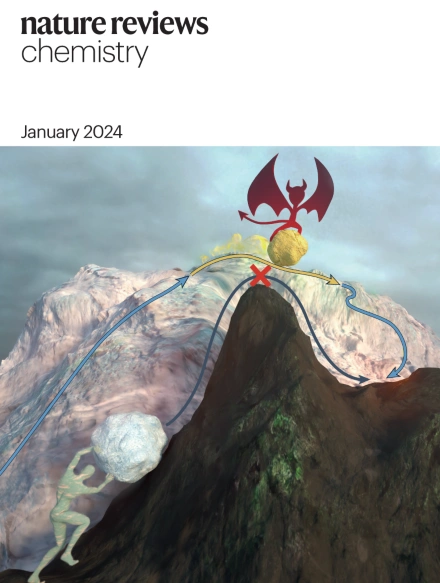Multifaceted nature of defect tolerance in halide perovskites and emerging semiconductors
IF 51.7
1区 化学
Q1 CHEMISTRY, MULTIDISCIPLINARY
引用次数: 0
Abstract
Lead halide perovskites (LHPs) have shot to prominence as efficient energy-conversion materials that can be processed using cost-effective fabrication methods. A reason for their exceptional performance is their crystallographic defect tolerance, enabling long charge-carrier lifetimes despite high defect densities. Achieving defect tolerance in broader classes of materials would impact on the semiconductor industry substantially. Considerable efforts have been made to understand the origins of defect tolerance, so as to design stable and nontoxic alternatives to LHPs. However, understanding defect tolerance in LHPs is far from straightforward. This Review discusses the models proposed for defect tolerance in halide perovskites, evaluating the experimental and theoretical support for these models, as well as their limitations. We also cover attempts to apply these models to identify materials beyond LHPs that could exhibit defect tolerance. Finally, we discuss the experimental methods used to understand defects in mixed ionic–electronic conductors, as well as the important information that is necessary for a deeper understanding, in order to develop improved models that enable the design of defect-tolerant semiconductors. Defect tolerance is a key factor behind the exceptional optoelectronic properties of lead halide perovskites, but it is not well understood. This Review discusses the models for defect tolerance and what has been learnt in generalizing these models to lead-free, stable materials.


卤化物钙钛矿和新兴半导体中缺陷容忍度的多面性
卤化铅钙钛矿(LHPs)作为一种高效的能量转换材料,可以使用成本效益高的制造方法进行加工。其优异性能的一个原因是其晶体缺陷容忍度,尽管高缺陷密度,仍能实现长载流子寿命。在更广泛的材料类别中实现缺陷容忍度将对半导体工业产生重大影响。为了设计出稳定、无毒的lhp替代品,人们已经做出了相当大的努力来了解缺陷耐受的起源。然而,理解lhp中的缺陷容忍度远非易事。本文讨论了目前提出的卤化物钙钛矿缺陷容限模型,评估了这些模型的实验和理论支持,以及它们的局限性。我们还介绍了应用这些模型来识别可能表现出缺陷容忍度的lhp以外的材料的尝试。最后,我们讨论了用于理解混合离子-电子导体中缺陷的实验方法,以及深入理解所必需的重要信息,以便开发改进的模型,使设计耐缺陷半导体成为可能。
本文章由计算机程序翻译,如有差异,请以英文原文为准。
求助全文
约1分钟内获得全文
求助全文
来源期刊

Nature reviews. Chemistry
Chemical Engineering-General Chemical Engineering
CiteScore
52.80
自引率
0.80%
发文量
88
期刊介绍:
Nature Reviews Chemistry is an online-only journal that publishes Reviews, Perspectives, and Comments on various disciplines within chemistry. The Reviews aim to offer balanced and objective analyses of selected topics, providing clear descriptions of relevant scientific literature. The content is designed to be accessible to recent graduates in any chemistry-related discipline while also offering insights for principal investigators and industry-based research scientists. Additionally, Reviews should provide the authors' perspectives on future directions and opinions regarding the major challenges faced by researchers in the field.
 求助内容:
求助内容: 应助结果提醒方式:
应助结果提醒方式:


